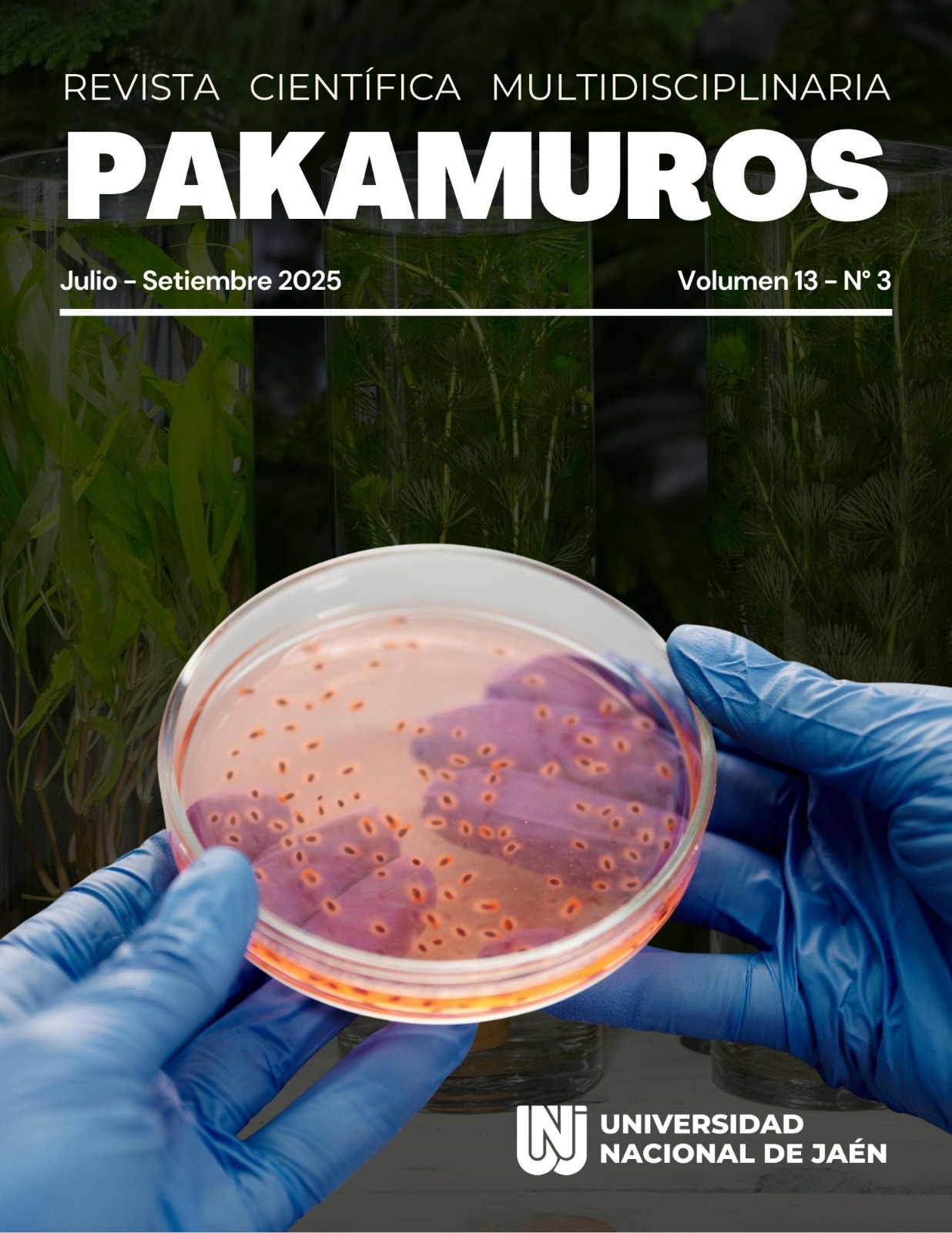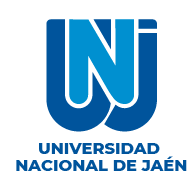Freshwater algae: functional properties and uses in the food industry
DOI:
https://doi.org/10.37787/xwf8zv08Keywords:
Freshwater algae, functional properties, nutraceuticals, biocompounds extractionAbstract
Freshwater algae are considered a very important resource within the food industry due to their high nutritional content and bioactive compounds. This review article aims to address microalgae and macroalgae as alternative/complementary protein sources and explore their potential applications in food products. The main types of freshwater microalgae (including cyanobacteria such as Arthrosporic and green algae such as Chlorella, Scenedesmus, and Haematococcus) are described, their morphology, ecological relevance, and applications (food, nutraceutical, and industrial). Likewise, the extraction and application methods of their components (conventional, ultrasonic, Soxhlet, microwave, CO2 (SFE) are detailed, comparing principles, operating parameters, yields, and benefits for the industry. The proximate and micronutrient composition of each algae (proteins, carbohydrates, lipids, ash, moisture, fiber, calcium, iron, and other minerals) is also presented, along with their current uses in functional foods (flours, beverages, baked goods). The use of omics technologies is incorporated as a tool to characterize algae and microalgae. Finally, the impacts of algae consumption on health, their contribution of amino acids and vitamins, and their antioxidant and anti-inflammatory properties, so highly sought after by consumers today when choosing a functional food, are discussed.
References
Abdel-Hameed, M., Sestric, R., Hardy, B., Levin, D. B., y Sorensen, J. L. (2023). Astaxanthin stability in intracellular and extracellular conditions from the green alga Haematococcus pluvialis. Food Chemistry Advances, 3, 100432–100432. https://doi.org/10.1016/j.focha.2023.100432
Abreu, A. P., Martins, R., y Nunes, J. (2023). Emerging Applications of Chlorella sp. and Spirulina (Arthrospira) sp. Bioengineering, 10(8), 955. https://doi.org/10.3390/bioengineering10080955
Agustini, W., Ma’ruf, F., Widayat, W., Suzery, M., Hadiyanto H., y Benjakul, S. (2016). Application of spirulina platensis on ice cream and soft cheese with respect to their nutritional and sensory perspectives. Jurnal Teknologi, 78(4-2). https://doi.org/10.11113/jt.v78.8216
Amato, A., Terzo, S., Pierenrico Marchesa, Maffongelli, A., Martorana, M., Scoglio, S., y Mulè, F. (2021). Spasmolytic Effects of Aphanizomenon Flos Aquae (AFA) Extract on the Human Colon Contractility. Nutrients, 13(10), 3445–3445. https://doi.org/10.3390/nu13103445
Ampofo, J., y Abbey, L. (2022). Microalgae: Bioactive Composition, Health Benefits, Safety and Prospects as Potential High-Value Ingredients for the Functional Food Industry. Foods, 11(12), 1744–1744. https://doi.org/10.3390/foods11121744
Armaini, A., Imelda, I., Yerizel, E., Suharti, N., Kusnanda, A. J., y Musifa, E. (2024). Characterization and Biological activities of Phycocyanin extracted from Spirulina platensis local isolate of Maninjau Lake, West Sumatra, Indonesia. Research Journal of Pharmacy and Technology, 3119–3126. https://doi.org/10.52711/0974-360x.2024.00488
Arora, N., Pienkos, P. T., Vikas Pruthi, Poluri, K. M., y Guarnieri, M. T. (2018). Leveraging algal omics to reveal potential targets for augmenting TAG accumulation. Biotechnology Advances, 36(4), 1274–1292. https://doi.org/10.1016/j.biotechadv.2018.04.005
Aswathy, V., Mavai, S., Bains, A., Sridhar, K., Inbaraj, B. S., Chawla, P., y Sharma, M. (2025). Unveiling the potential of freshwater edible algae: Innovative extractions and functional food applications. South African Journal of Botany, 177, 643–664. https://doi.org/10.1016/j.sajb.2024.12.023
Ayub, A., Rahayu, F., Khamidah, A., Antarlina, S. S., Iswari, K., Supriyadi, K., Mufidah, E., Singh, A., Chopra, C., y Wani, A. K. (2025). Harnessing microalgae as a bioresource for nutraceuticals: advancing bioactive compound exploration and shaping the future of health and functional food innovation. Discover Applied Sciences, 7(5). https://doi.org/10.1007/s42452-025-06916-3
Batista, A. P., Niccolai, A., Patrícia Fradinho, Fragoso, S., Bursic, I., Rodolfi, L., Biondi, N., Tredici, M. R., Sousa, I., y Raymundo, A. (2017). Microalgae biomass as an alternative ingredient in cookies: Sensory, physical and chemical properties, antioxidant activity and in vitro digestibility. Algal Research, 26, 161–171. https://doi.org/10.1016/j.algal.2017.07.017
Baumgardt, F. J. L., Filho, A. Z., Brandalize, M. V., da, C., Antoniosi, N. R., Abreu, P. C. O. V., Corazza, M. L., y Ramos, L. P. (2015). Lipid content and fatty acid profile of Nannochloropsis oculata before and after extraction with conventional solvents and/or compressed fluids. The Journal of Supercritical Fluids, 108, 89–95. https://doi.org/10.1016/j.supflu.2015.11.003
Begum, N., Qi, F., Yang, F., Khan, Q. U., None Faizan, Fu, Q., Li, J., Wang, X., Wang, X., Wang, J., Li, R., Liu, D., y Zhang, W. (2024). Nutritional Composition and Functional Properties of A. Platensis-Derived Peptides: A Green and Sustainable Protein-Rich Supplement. Processes, 12(11), 2608–2608. https://doi.org/10.3390/pr12112608
Chiellini, C., Serra, V., Gammuto, L., Ciurli, A., Longo, V., y Gabriele, M. (2022). Evaluation of Nutraceutical Properties of Eleven Microalgal Strains Isolated from Different Freshwater Aquatic Environments: Perspectives for Their Application as Nutraceuticals. Foods, 11(5), 654. https://doi.org/10.3390/foods11050654
Comer, J., Bassette, M., Burghart, R., Loyd, M., Ishiguro, S., Azhagiya Singam, E. R., Vergara-Jaque, A., Nakashima, A., Suzuki, K., Geisbrecht, B. V., y Tamura, M. (2021). Beta-1,3 Oligoglucans Specifically Bind to Immune Receptor CD28 and May Enhance T Cell Activation. International Journal of Molecular Sciences, 22(6), 3124. https://doi.org/10.3390/ijms22063124
Cotas, J., Leandro, A., Monteiro, P., Pacheco, D., Figueirinha, A., Gonçalves, A. M. M., da Silva, G. J., y Pereira, L. (2020). Seaweed Phenolics: From Extraction to Applications. Marine Drugs, 18(8), 384. https://doi.org/10.3390/md18080384
Couto, D., Conde, T. A., Melo, T., Neves, B., Costa, M., Cunha, P., Guerra, I., Correia, N., Silva, J. T., Pereira, H., Varela, J., Silva, J., Domingues, R., y Domingues, P. (2022). Effects of outdoor and indoor cultivation on the polar lipid composition and antioxidant activity of Nannochloropsis oceanica and Nannochloropsis limnetica: A lipidomics perspective. Algal Research, 64, 102718–102718. https://doi.org/10.1016/j.algal.2022.102718
Díaz-Godínez, G., Peña-Solis, K., y Díaz-Domínguez, G. (2024). Algae as nutritional and bioactive food ingredients. Revista Mexicana de Ingeniería Química, 23(2), 1–22. https://doi.org/10.24275/rmiq/bio24209
Furbeyre, J. van Milgen, T. Mener, M. Gloaguen, y E. Labussière. (2016). Effects of dietary supplementation with freshwater microalgae on growth performance, nutrient digestibility and gut health in weaned piglets. Animal, 11(2), 183–192. https://doi.org/10.1017/s1751731116001543
Galizzi, G., Deidda, I., Amato, A., Calvi, P., Terzo, S., Caruana, L., Scoglio, S., Mulè, F., y Di Carlo, M. (2023). Aphanizomenon flos-aquae (AFA) Extract Prevents Neurodegeneration in the HFD Mouse Model by Modulating Astrocytes and Microglia Activation. International Journal of Molecular Sciences, 24(5), 4731. https://doi.org/10.3390/ijms24054731
Gallego, R., Bueno, M., Chourio, A. M., Ibáñez, E., Marleny D.A. Saldaña, y Herrero, M. (2020). Use of high and ultra-high pressure based-processes for the effective recovery of bioactive compounds from Nannochloropsis oceanica microalgae. The Journal of Supercritical Fluids, 167, 105039–105039. https://doi.org/10.1016/j.supflu.2020.105039
Garnier, M., Carrier, G., H. Rogniaux, Nicolau, E., G. Bougaran, B. Saint-Jean, y Cadoret, J. P. (2014). Comparative proteomics reveals proteins impacted by nitrogen deprivation in wild-type and high lipid-accumulating mutant strains of Tisochrysis lutea. Journal of Proteomics, 105, 107–120. https://doi.org/10.1016/j.jprot.2014.02.022
Golmakani, M.-T., Soleimanian-Zad, S., Alavi, N., Nazari, E., y Eskandari, M. H. (2018). Effect of Spirulina (Arthrospira platensis) powder on probiotic bacteriologically acidified feta-type cheese. Journal of Applied Phycology, 31(2), 1085–1094. https://doi.org/10.1007/s10811-018-1611-2
Gowda, G. A. N., y Djukovic, D. (2014). Overview of Mass Spectrometry-Based Metabolomics: Opportunities and Challenges. Methods in Molecular Biology, 3–12. https://doi.org/10.1007/978-1-4939-1258-2_1
Gu, Y., Yee, M., Lian, L., Shimizu, K., Chae, K.-J., Ngoc, T., y Khoo, K. S. (2024). Genetic engineering of Haematococcus pluvialis microalgae for the enhancement of astaxanthin production: A review. Biocatalysis and Agricultural Biotechnology, 60, 103298–103298. https://doi.org/10.1016/j.bcab.2024.103298
Guarnieri, M. T., y Pienkos, P. T. (2014). Algal omics: unlocking bioproduct diversity in algae cell factories. Photosynthesis Research, 123(3), 255–263. https://doi.org/10.1007/s11120-014-9989-4
Guo, J., Huang, Y., Gu, X., y Meng, Z. (2024). Spirulina platensis protein-based emulsion gel as fat substitute in meat analogs: Evaluation performance across post-processing. Food Chemistry, 463, 141414–141414. https://doi.org/10.1016/j.foodchem.2024.141414
Hughes, A. H., Magot, F., Tawfike, A. F., Rad-Menéndez, C., Thomas, N., Young, L. C., Stucchi, L., Carettoni, D., Stanley, M. S., Edrada-Ebel, R., y Duncan, K. R. (2021). Exploring the Chemical Space of Macro- and Micro-Algae Using Comparative Metabolomics. Microorganisms, 9(2), 311. https://doi.org/10.3390/microorganisms9020311
Ilyas, Z., Ali Redha, A., Wu, Y. S., Ozeer, F. Z., y Aluko, R. E. (2023). Nutritional and Health Benefits of the Brown Seaweed Himanthalia elongata. Plant Foods for Human Nutrition, 78(2), 233–242. https://doi.org/10.1007/s11130-023-01056-8
Ioulia Georgiopoulou, Soultana Tzima, Louli, V., y Magoulas, K. (2023). Process Optimization of Microwave-Assisted Extraction of Chlorophyll, Carotenoid and Phenolic Compounds from Chlorella vulgaris and Comparison with Conventional and Supercritical Fluid Extraction. Applied Sciences, 13(4), 2740–2740. https://doi.org/10.3390/app13042740
Irvani, N., King, J., Hamzelou, S., Ji, D., Tahmasian, A., Kebede, B., Carne, A., Agyei, D., y Oey, I. (2024). Impact of different food-grade protein extraction methods on the proteomic profile and potential allergenicity of Spirulina (Arthrospira platensis). Algal Research, 103765–103765. https://doi.org/10.1016/j.algal.2024.103765
Ivanova, P. T., Milne, S. B., Myers, D. S., y Brown, H. A. (2009). Lipidomics: a mass spectrometry-based systems level analysis of cellular lipids. Current Opinion in Chemical Biology, 13(5-6), 526–531. https://doi.org/10.1016/j.cbpa.2009.08.011
Jadhav, H. B., Choudhary, P., Deshmukh, N. D., Singh, D. K., Das, M., Das, A., Sai, S., Muthusamy, G., Annapure, U. S., Ramniwas, S., Mugabi, R., y Gulzar Ahmad Nayik. (2024). Advancements in non-thermal technologies for enhanced extraction of functional triacylglycerols from microalgal biomass: A comprehensive review. Food Chemistry X, 23, 101694–101694. https://doi.org/10.1016/j.fochx.2024.101694
Joana, Madalena Grácio, Sousa, I., António Pagarete, Nunes, M. C., y Raymundo, A. (2023). Tuning the Bioactive Properties of Dunaliella salina Water Extracts by Ultrasound-Assisted Extraction. Marine Drugs, 21(9), 472–472. https://doi.org/10.3390/md21090472
Kamil, S. N., Tezcanlı, S., Çelik, Y., Toprakçı, İ., y Şahin, S. (2025). Optimized extraction of Spirulina platensis phenolics using natural deep eutectic solvents for cosmetics. Preparative Biochemistry y Biotechnology, 1–14. https://doi.org/10.1080/10826068.2025.2467440
Kartthigeen, T., Goon, J. A., Suzana Makpol, y Tan, J. K. (2023). Effects of Microalgae on Metabolic Syndrome. Antioxidants, 12(2), 449–449. https://doi.org/10.3390/antiox12020449
Kim, M. S., Kim, J. Y., Choi, W. H., y Lee, S. S. (2008). Effects of seaweed supplementation on blood glucose concentration, lipid profile, and antioxidant enzyme activities in patients with type 2 diabetes mellitus. Nutrition Research and Practice, 2(2), 62–62. https://doi.org/10.4162/nrp.2008.2.2.62
Lauritano, C., Ferrante, M. I., y Rogato, A. (2019). Marine Natural Products from Microalgae: An -Omics Overview. Marine Drugs, 17(5), 269. https://doi.org/10.3390/md17050269
Lawton, R. J., Nys, R. de, y Paul, N. A. (2013). Selecting Reliable and Robust Freshwater Macroalgae for Biomass Applications. PLoS ONE, 8(5), e64168–e64168. https://doi.org/10.1371/journal.pone.0064168
Liu, W., Wang, J., Gao, Q., Shen, W., Weng, P., Wu, Z., Qin, W., y Liu, Y. (2024). Combined analysis of gut microbiota and metabolomics in high-fat model mice fed with Chlorella pyrenoidosa peptides. Journal of Functional Foods, 121, 106410–106410. https://doi.org/10.1016/j.jff.2024.106410
Lucas, B. F., y Brunner, T. A. (2024). Attitudes and perceptions towards microalgae as an alternative food: A consumer segmentation in Switzerland. Algal Research, 78, 103386. https://doi.org/10.1016/j.algal.2023.103386
Martínez-Sámano, J., Torres-Montes de Oca, A., Luqueño-Bocardo, O. I., Torres-Durán, P. V., y Juárez-Oropeza, M. A. (2018). Spirulina maxima Decreases Endothelial Damage and Oxidative Stress Indicators in Patients with Systemic Arterial Hypertension: Results from Exploratory Controlled Clinical Trial. Marine Drugs, 16(12), 496. https://doi.org/10.3390/md16120496
Méndez-Ancca, Renzo Pepe-Victoriano, Hebert, Zambrano-Cabanillas, A. W., Olegario Marín-Machuca, Zapata, C., Maquera, M. M., Rosmery Fernandez Huanca, Aguilera, J. G., Zuffo, A. M., y Ratke, R. F. (2023). Physicochemical Evaluation of Cushuro (Nostoc sphaericum Vaucher ex Bornet y Flahault) in the Region of Moquegua for Food Purposes. Foods, 12(10), 1939–1939. https://doi.org/10.3390/foods12101939
Michalak, I., y Messyasz, B. (2020). Concise review of Cladophora spp.: macroalgae of commercial interest. Journal of Applied Phycology, 33(1), 133–166. https://doi.org/10.1007/s10811-020-02211-3
Mubarak, M., A. Shaija, y T.V. Suchithra. (2014). A review on the extraction of lipid from microalgae for biodiesel production. Algal Research, 7, 117–123. https://doi.org/10.1016/j.algal.2014.10.008
Naik, B., Mishra, R., Kumar, V., Mishra, S., Gupta, U., Rustagi, S., Gupta, A. K., Preet, M. S., Bhatt, S. C., y Rizwanuddin, S. (2024). Micro-algae: Revolutionizing food production for a healthy and sustainable future. Journal of Agriculture and Food Research, 15, 100939. https://doi.org/10.1016/j.jafr.2023.100939
Nguyen, H. C., Ngo, K. N., Tran, H. K., y Barrow, C. J. (2024). Enzyme-Assisted Coextraction of Phenolics and Polysaccharides from Padina gymnospora. Marine Drugs, 22(1), 42–42. https://doi.org/10.3390/md22010042
Niccolai, A., Venturi, M., Galli, V., Pini, N., Rodolfi, L., Biondi, N., D’Ottavio, M., Batista, A. P., Raymundo, A., Granchi, L., y Tredici, M. R. (2019). Development of new microalgae-based sourdough “crostini”: functional effects of Arthrospira platensis (spirulina) addition. Scientific Reports, 9(1). https://doi.org/10.1038/s41598-019-55840-1
Nikolova, K., Petkova, N., Mihaylova, D., Gentscheva, G., Gavrailov, G., Pehlivanov, I., y Andonova, V. (2024). Extraction of Phycocyanin and Chlorophyll from Spirulina by “Green Methods.” Separations, 11(2), 57. https://doi.org/10.3390/separations11020057
Noura El-Ahmady El-Naggar, Hussein, M. H., Shaaban-Dessuuki, S. A., y Dalal, S. R. (2020). Production, extraction and characterization of Chlorella vulgaris soluble polysaccharides and their applications in AgNPs biosynthesis and biostimulation of plant growth. Scientific Reports, 10(1). https://doi.org/10.1038/s41598-020-59945-w
Nur, S., Tan, J. S., Siti Nurbaya Oslan, Matanjun, P., Mohd, A., Rossita Shapawi, y Huda, N. (2021). Haematococcus pluvialis as a Potential Source of Astaxanthin with Diverse Applications in Industrial Sectors: Current Research and Future Directions. Molecules, 26(21), 6470–6470. https://doi.org/10.3390/molecules26216470
Podgórska-Kryszczuk., I. (2024). Spirulina—An Invaluable Source of Macro- and Micronutrients with Broad Biological Activity and Application Potential. Molecules, 29(22), 5387–5387. https://doi.org/10.3390/molecules29225387
Ponce, E. (2014). Nostoc: un alimento diferente y su presencia en la precordillera de Arica. Idesia, 32(2), 119–121. https://doi.org/10.4067/s0718-34292014000200015
Prihanto, A., Jatmiko, D., Wakayama, M. (2022). Microalgas de agua dulce como fuentes prometedoras de alimentos: propiedades nutricionales y funcionales. https://openmicrobiologyjournal.com/volume/16/elocator/e187428582206200/fulltext/
Rahman, N. A., Khatoon, H., Yusuf, N., Banerjee, S., Haris, N. A., Lananan, F., y Tomoyo, K. (2017). Tetraselmis chuii biomass as a potential feed additive to improve survival and oxidative stress status of Pacific white-leg shrimp Litopenaeus vannamei postlarvae. International Aquatic Research, 9(3), 235–247. https://doi.org/10.1007/s40071-017-0173-2
Rivera, E., José, B., y Requena, Z. (2020). Las microalgas como fuente de nutrientes en vías de desarrollo. Trabajo de fin de grado. https://rua.ua.es/dspace/bitstream/10045/107312/1/Las_microalgas_como_fuente_de_nutrientes_en_vias_de_d_Agudelo_Rivera_Esteban.pdf
Romay, C., Remírez, D., y González, R. (2025). Actividad antioxidante de la ficocianina frente a radicales peroxílicos y la peroxidación lipídica microsomal. Revista Cubana de Investigaciones Biomédicas, 20(1), 38–41. http://scielo.sld.cu/scielo.php?script=sci_arttextypid=S0864-03002001000100008
Santana, A., Jesus, S., Larrayoz, M. A., y Filho, R. M. (2012). Supercritical Carbon Dioxide Extraction of Algal Lipids for the Biodiesel Production. Procedia Engineering, 42, 1755–1761. https://doi.org/10.1016/j.proeng.2012.07.569
Scoglio, G. D., Jackson, H. O., y Purton, S. (2024). The commercial potential of Aphanizomenon flos-aquae, a nitrogen-fixing edible cyanobacterium. Journal of Applied Phycology, 36(4), 1593–1617. https://doi.org/10.1007/s10811-024-03214-0
Sharma, P., Slathia, P. S., Raina, N., y Bhagat, D. (2019). Microbial diversity in freshwater ecosystems and its industrial potential. Freshwater Microbiology, 341–392. https://doi.org/10.1016/b978-0-12-817495-1.00009-8
Shen, L., Pang, S., Zhong, M., Sun, Y., Qayum, A., Liu, Y., Rashid, A., Xu, B., Liang, Q., Ma, H., y Ren, X. (2023). A comprehensive review of ultrasonic assisted extraction (UAE) for bioactive components: Principles, advantages, equipment, and combined technologies. Ultrasonics Sonochemistry, 101, 106646. https://doi.org/10.1016/j.ultsonch.2023.106646
Sirohi, R., Joun, J., Choi, H. I., Gaur, V. K., y Sim, S. J. (2021). Algal glycobiotechnology: omics approaches for strain improvement. Microbial Cell Factories, 20(1). https://doi.org/10.1186/s12934-021-01656-6
Su, X., Xu, J., Yan, X., Zhao, P., Chen, J., Zhou, C., Zhao, F., y Li, S. (2012). Lipidomic changes during different growth stages of Nitzschia closterium f. minutissima. Metabolomics, 9(2), 300–310. https://doi.org/10.1007/s11306-012-0445-1
Sun, J., Li, Q., Xu, H., y Zhang, W. (2022). Analysis of Metabolomic Changes in Xylem and Phloem Sap of Cucumber under Phosphorus Stresses. Metabolites, 12(4), 361. https://doi.org/10.3390/metabo12040361
Tavakoli, S., Hong, H., Wang, K., Yang, Q., Hadi Hashemi Gahruie, Zhuang, S., Li, Y., Liang, Y., Tan, Y., y Luo, Y. (2021). Ultrasonic-assisted food-grade solvent extraction of high-value added compounds from microalgae Spirulina platensis and evaluation of their antioxidant and antibacterial properties. Algal Research, 60, 102493–102493. https://doi.org/10.1016/j.algal.2021.102493
Tipnee, S., Ramaraj, R., y Unpaprom, Y. (2015). Nutritional Evaluation of Edible Freshwater Green Macroalga Spirogyra varians. Emer Life Sci Res, 1(2), 1–7. https://www.emergentresearch.org/uploads/38/1778_pdf.pdf
Valado, A., y Pereira, L. (2023). Algae and cardiovascular-health. Elsevier EBooks, 493–517. https://doi.org/10.1016/b978-0-323-98819-3.00009-2
Wang, Y., Tibbetts, S., y McGinn, P. (2021). Microalgae as Sources of High-Quality Protein for Human Food and Protein Supplements. Foods, 10(12), 3002–3002. https://doi.org/10.3390/foods10123002
Webb, P., Somers, N. K., y Thilsted, S. H. (2023). Seaweed’s contribution to food security in low- and middle-income countries: Benefits from production, processing and trade. Global Food Security, 37, 100686–100686. https://doi.org/10.1016/j.gfs.2023.100686
Wetterwald, L., Leybros, A., Fleury, G., Delrue, F., Dimitriades-Lemaire, A., Chambonniere, P., y Hertz, A. (2023). Supercritical CO2 extraction of neutral lipids from dry and wet Chlorella vulgaris NIES 227 microalgae for biodiesel production. Journal of Environmental Chemical Engineering, 11(5), 110628. https://doi.org/10.1016/j.jece.2023.110628
Wu, J. Y., Tso, R., Teo, H. S., y Haldar, S. (2023). The utility of algae as sources of high value nutritional ingredients, particularly for alternative/complementary proteins to improve human health. Frontiers in Nutrition, 10. https://doi.org/10.3389/fnut.2023.1277343
Zhang, K., Wan, M., Bai, W., He, M., Wang, W., Fan, F., Guo, J., Yu, T., y Li, Y. (2023). A novel method for extraction of paramylon from Euglena gracilis for industrial production. Algal Research, 71, 103058. https://doi.org/10.1016/j.algal.2023.103058
Zhou, J., Wang, M., Saraiva, J. A., Martins, A. P., Pinto, C. A., Prieto, M. A., Simal-Gandara, J., Cao, H., Xiao, J., y Barba, F. J. (2022). Extraction of lipids from microalgae using classical and innovative approaches. Food Chemistry, 384, 132236–132236. https://doi.org/10.1016/j.foodchem.2022.132236
Ziyaei, K., Abdi, F., Mokhtari, M., Daneshmehr, M. A., y Ataie, Z. (2023). Phycocyanin as a nature-inspired antidiabetic agent: A systematic review. Phytomedicine, 119, 154964. https://doi.org/10.1016/j.phymed.2023.154964
Published
Issue
Section
License
Copyright (c) 2025 Pakamuros Scientific Journal

This work is licensed under a Creative Commons Attribution-NonCommercial 4.0 International License.













